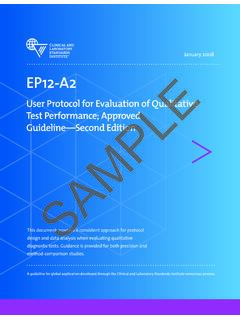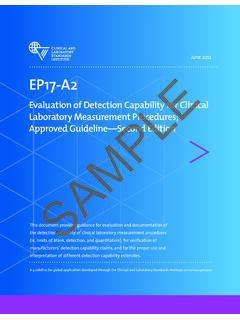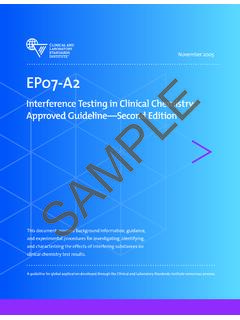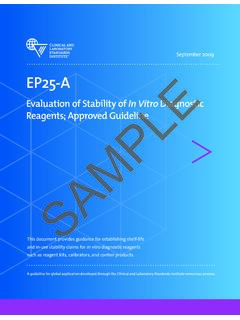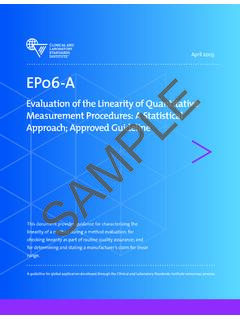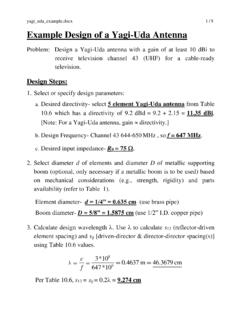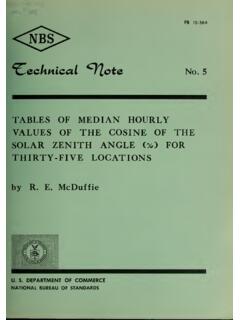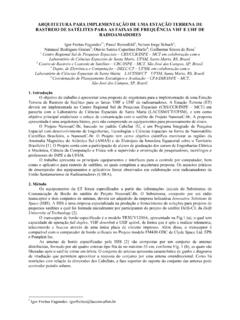Transcription of NBS06A: Newborn Blood Spot Screening for Severe Combined ...
1 April 2013 NBS06-ANewborn Blood Spot Screening for Severe Combined Immunodeficiency by Measurement of T-cell Receptor Excision Circles; Approved GuidelineThis document addresses the detection of Severe Combined immunodeficiency (SCID) by population-based Newborn Screening using dried Blood spot specimens to measure T-cell receptor excision circles. SCID is a lethal disorder of infancy that is not evident at birth, and effective treatment requires presymptomatic guideline for global application developed through the Clinical and Laboratory Standards Institute consensus process. SAMPLEC linical and Laboratory Standards InstituteSetting the standard for quality in clinical laboratory testing around the Clinical and Laboratory Standards Institute (CLSI) is a not-for-profit membership organization that brings together the varied perspectives and expertise of the worldwide laboratory community for the advancement of a common cause: to foster excellence in laboratory medicine by developing and implementing clinical laboratory standards and guidelines that help laboratories fulfill their responsibilities with efficiency, effectiveness, and global applicability.
2 Consensus ProcessConsensus the substantial agreement by materially affected, competent, and interested parties is core to the development of all CLSI documents. It does not always connote unanimous agreement, but does mean that the participants in the development of a consensus document have considered and resolved all relevant objections and accept the resulting agreement. Commenting on DocumentsCLSI documents undergo periodic evaluation and modification to keep pace with advancements in technologies, procedures, methods, and protocols affecting the laboratory or health s consensus process depends on experts who volunteer to serve as contributing authors and/or as participants in the reviewing and commenting process.
3 At the end of each comment period, the committee that developed the document is obligated to review all comments, respond in writing to all substantive comments, and revise the draft document as appropriate. Comments on published CLSI documents are equally essential, and may be submitted by anyone, at any time, on any document. All comments are addressed according to the consensus process by a committee of experts. Appeals ProcessIf it is believed that an objection has not been adequately addressed, the process for appeals is documented in the CLSI Administrative comments and responses submitted on draft and published documents are retained on file at CLSI and are available upon request.
4 Get Involved Volunteer! Do you use CLSI documents in your workplace? Do you see room for improvement? Would you like to get involved in the revision process? Or maybe you see a need to develop a new document for an emerging technology? CLSI wants to hear from you. We are always looking for volunteers. By donating your time and talents to improve the standards that affect your own work, you will play an active role in improving public health across the further information on committee participation or to submit comments, contact and Laboratory Standards Institute950 West Valley Road, Suite 2500 Wayne, PA 19087 USA P: : ISBN 1-56238-871-1 (Print) ISBN 1-56238-872-X (Electronic) ISSN 1558-6502 (Print) NBS06-A ISSN 2162-2914 (Electronic) Vol.
5 33 No. 4 Newborn Blood Spot Screening for Severe Combined Immunodeficiency by Measurement of T-cell Receptor Excision Circles; Approved Guideline Volume 33 Number 4 W. Harry Hannon, PhD Roshini Sarah Abraham, PhD, D(ABMLI) Lisa Kobrynski, MD, MPH Robert F. Vogt, Jr., PhD Ona Adair, PhD Constantino Aznar, PhD Mei W. Baker, MD, FACMG Amy M. Brower, PhD Michele Caggana, ScD, FACMG Anne Marie Comeau, PhD William Grossman, MD, PhD Francis K. Lee, MSc, PhD Jennifer M. Puck, MD Jennifer L. Taylor, PhD Danielle M. Turley, PhD Mirjam van Der Burg, PhD Berta Warman, MS Golriz K. Yazdanpanah, MS Alice Ylikoski, PhD Abstract Severe Combined immunodeficiency (SCID) is a congenital clinical disorder that is not evident at birth.
6 Without treatment, most babies with SCID will die in infancy from virulent infection. This guideline addresses the detection of SCID by population-based Newborn Screening (NBS) using dried Blood spot (DBS) specimens to measure T-cell receptor excision circles (TREC). Responding to recent US recommendations, the document is intended to facilitate the incorporation of SCID NBS into the routine operation of NBS programs worldwide. Based on extensive input from NBS laboratories, it describes the laboratory tests currently used to measure TREC in DBS by real-time quantitative PCR. The document also describes biological and clinical features of SCID and of other conditions potentially identified by SCID NBS.
7 It provides an overview of laboratory operations including physical layout, instrumentation, TREC assay protocols, automated methodologies, and alternative platforms. The document includes a summary of diagnostic tests used for follow-up of abnormal TREC results as well as other short-term and long-term follow-up activities, including case tracking. It describes variants of SCID that may not be detected by TREC assays in Newborn DBS. The guideline delineates the steps for implementing SCID NBS: validating the laboratory test, conducting pilot studies, and transitioning to routine Screening . It is directed toward NBS laboratory personnel, public health program personnel, producers of laboratory products related to NBS, and those involved with oversight of NBS testing.
8 Clinical and Laboratory Standards Institute (CLSI). Newborn Blood Spot Screening for Severe Combined Immunodeficiency by Measurement of T-cell Receptor Excision Circles; Approved Guideline. CLSI document NBS06-A (ISBN 1-56238-871-1 [Print]; ISBN 1-56238-872-X [Electronic]). Clinical and Laboratory Standards Institute, 950 West Valley Road, Suite 2500, Wayne, Pennsylvania 19087 USA, 2013. The Clinical and Laboratory Standards Institute consensus process, which is the mechanism for moving a document through two or more levels of review by the health care community, is an ongoing process. Users should expect revised editions of any given document. Because rapid changes in technology may affect the procedures, methods, and protocols in a standard or guideline, users should replace outdated editions with the current editions of CLSI documents.
9 Current editions are listed in the CLSI catalog and posted on our website at If your organization is not a member and would like to become one, and to request a copy of the catalog, contact us at: Telephone: ; Fax: ; E-Mail: Website: SAMPLEN umber 4 NBS06-A ii Copyright 2013 Clinical and Laboratory Standards Institute. Except as stated below, any reproduction of content from a CLSI copyrighted standard, guideline, companion product, or other material requires express written consent from CLSI. All rights reserved. Interested parties may send permission requests to CLSI hereby grants permission to each individual member or purchaser to make a single reproduction of this publication for use in its laboratory procedure manual at a single site.
10 To request permission to use this publication in any other manner, e-mail Suggested Citation CLSI. Newborn Blood Spot Screening for Severe Combined Immunodeficiency by Measurement of T-cell Receptor Excision Circles; Approved Guideline. CLSI document NBS06-A. Wayne, PA: Clinical and Laboratory Standards Institute; 2013. Approved Guideline April 2013 ISBN 1-56238-871-1 (Print) ISBN 1-56238-872-X (Electronic) ISSN 1558-6502 (Print) ISSN 2162-2914 (Electronic) SAMPLEV olume 33 NBS06-A v Contents Abstract .. i Committee Membership .. iii Foreword .. vii 1 Scope .. 1 2 Introduction .. 1 3 Standard Precautions.

